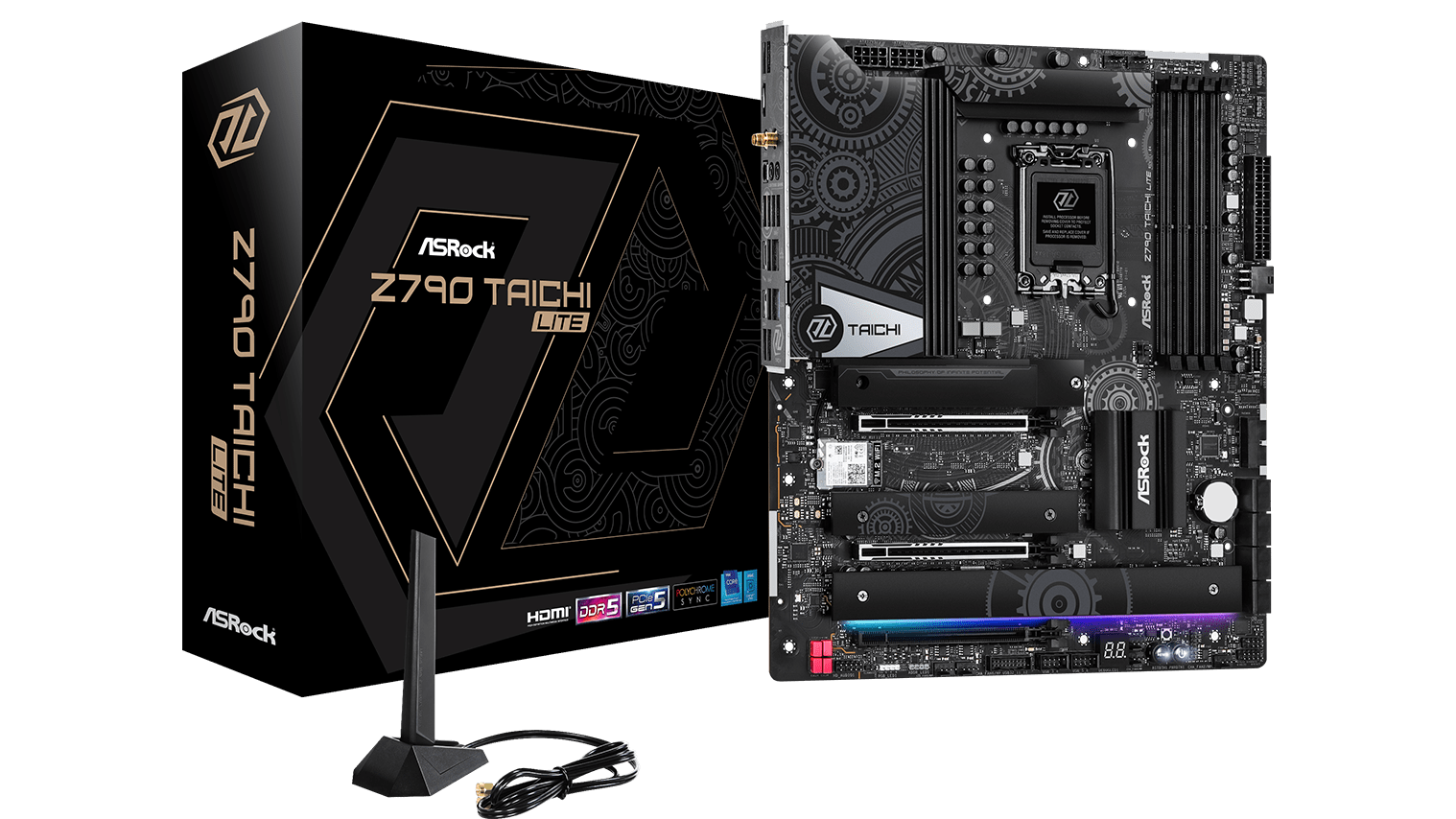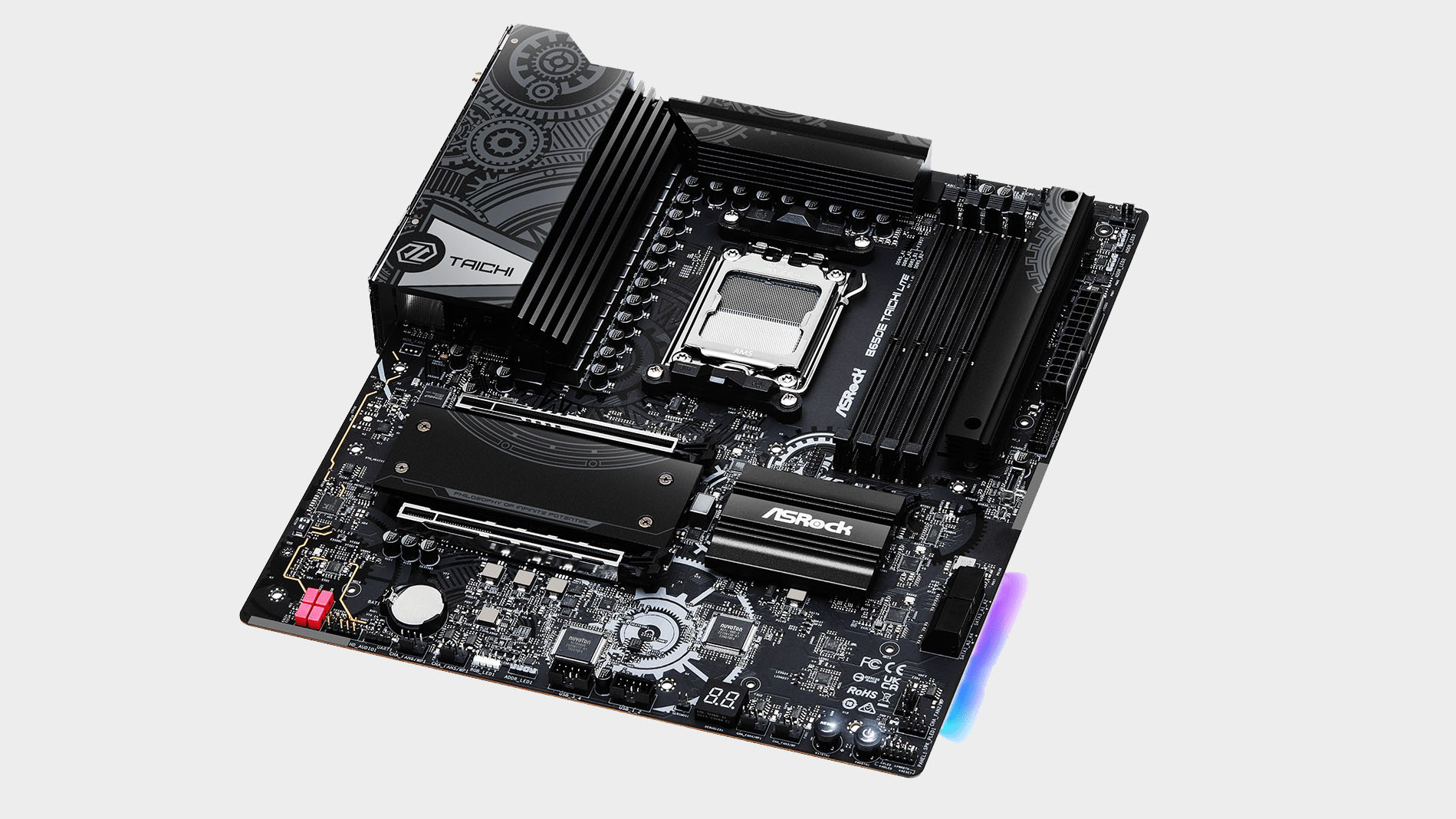ASRock announces Z790 and B650E Taichi Lite motherboards, and I hope it's the start of a trend
Less is more.

A few weeks back at Computex, ASRock unveiled a pair of interesting motherboards: The Z790 Taichi Lite and the B650E Taichi Lite. As of today they have been officially announced. And I for one am happy to see them.
The idea behind the Lite series is simple. They're otherwise identical to their existing Taichi counterparts, but with a simpler aesthetic. At Computex 2023, an ASRock rep told me the complicated cogs and wheels heatsinks of recent Taichi boards were quite expensive to make, and swapping these out for something simpler allowed it to sell the same motherboard at a cheaper price. Hoorah!
I've reviewed many Taichi boards, including the Z690 Taichi and B550 Taichi Razer Edition. I believe the first one I reviewed was the X99 Taichi in 2016 or 2017. This was during the era of excessive RGB and 'gamification' of entire product lines. Adding the word gaming to a board supposedly made it more appealing. The Taichi was a refreshing change.
At the time the Taichi really stood out with its blend of affordability, relatively simple non-gamer black and white aesthetic and solid feature set. In recent years, ASRock has elevated the Taichi brand, and it's now its flagship series, with the exception of limited edition models like the Aqua. Taichis are typically very good boards, but their appeal has diminished a bit due to excessive pricing

Best CPU for gaming: The top chips from Intel and AMD
Best gaming motherboard: The right boards
Best graphics card: Your perfect pixel-pusher awaits
Best SSD for gaming: Get into the game ahead of the rest
The same can be said of all high end motherboards though. No matter the reason, whether its component shortages, electrical complexity, feature creep, or the need for bigger profit margins, high end motherboards are too expensive. Of course you can still buy cheap motherboards, but what I'd like to see is less emphasis on flashy designs, accessory bundles and an 'everything plus the kitchen sink' approach.
I'd love to see more 'lite' motherboards. For starters, ditch the sculpted heatsinks that serve as little more than glorified advertisements. M.2 and chipset cooling is usually hidden underneath a graphics card anyway. Make heatsinks functional with a large surface area (E.g. fins) while keeping a powerful VRM capable of handling K CPUs and their fastest turbo modes. Give me half a dozen fast USB ports, a couple of M.2, two SATA, 2.5G LAN and WiFi. Bang, I just saved a couple of hundred dollars. Sometimes less really is more.
As long as such a board has good BIOS support, you could install a 14900K and let it do its turbo thing for the next five years. Once you close your case you'd never know you don't have a flagship board, it'll just be one without superfluous expensive crap.
The biggest gaming news, reviews and hardware deals
Keep up to date with the most important stories and the best deals, as picked by the PC Gamer team.

If you must have a board with Thunderbolt 4 or dual 10G LAN or an SSD add-in card, the makers will be all too happy to sell them to you, as they do now. But as a consumer, why can't I have the option to buy a high end motherboard with an entry level bundle?
It'll never happen of course. The reasons are obvious. Money, profits and margins. Motherboard makers want you to buy more expensive boards. Capitalism! Yay.
The DIY PC market is struggling, and compelling users to spend ever more on high spec gaming motherboards isn't conducive to a healthy ecosystem. Given there are already hundreds of different motherboards on the market, there is room for an unconventional motherboard product with a wish list like mine above, but will one of the manufacturers step up with such a product? It's doubtful. But one can hope.
I applaud Asrock's decision to release the Taichi Lite series, though their pricing hasn't been announced. I hope they sell well and we see more products like them in the future.

Chris' gaming experiences go back to the mid-nineties when he conned his parents into buying an 'educational PC' that was conveniently overpowered to play Doom and Tie Fighter. He developed a love of extreme overclocking that destroyed his savings despite the cheaper hardware on offer via his job at a PC store. To afford more LN2 he began moonlighting as a reviewer for VR-Zone before jumping the fence to work for MSI Australia. Since then, he's gone back to journalism, enthusiastically reviewing the latest and greatest components for PC & Tech Authority, PC Powerplay and currently Australian Personal Computer magazine and PC Gamer. Chris still puts far too many hours into Borderlands 3, always striving to become a more efficient killer.

